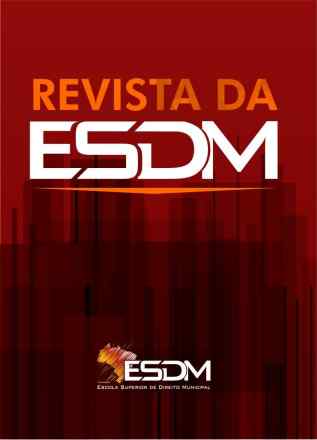OS BENEFÍCIOS E OS DESAFIOS NA UTILIZAÇÃO DO PREGÃO ELETRÔNICO NA ADMINISTRAÇÃO PÚBLICA MUNICIPAL
Revista da ESDM
OS BENEFÍCIOS E OS DESAFIOS NA UTILIZAÇÃO DO PREGÃO ELETRÔNICO NA ADMINISTRAÇÃO PÚBLICA MUNICIPAL
Autor Correspondente: Bruna Ohana Silva Brito | [email protected]
Palavras-chave: Licitações. Administração Pública Municipal. Pregão Eletrônico.
Resumos Cadastrados
Resumo Português:
O presente artigo teve como tema os benefícios e os desafios enfrentados na utilização do pregão eletrônico no âmbito da administração pública municipal. Na busca pela transparência nos atos da administração pública, de tal modo a modalidade de licitação chamada pregão, mira à transparência, agilidade e eficiência do procedimento de compra entre órgãos públicos e fornecedores sendo significativo o conhecimento em relação aos seus preceitos gerais, leis e regulamentos. Há dois tipos de pregão, o presencial e o eletrônico, e conforme a Instrução Normativa 206 de 2019, foram estabelecidos prazos para que órgãos da administração pública federal direta, autarquias, fundações, fundos especiais, e no âmbito municipal utilizem obrigatoriamente a forma eletrônica, quando estes executarem recursos advindos da União. Assim, o questionamento desta pesquisa é: Como o pregão eletrônico pode beneficiar a administração pública municipal e quais desafios norteiam a utilização dessa modalidade licitatória? Este estudo busca trazer relevantes contribuições no que tange as contratações públicas municipais através do pregão eletrônico. Portanto, o objetivo geral é analisar os benefícios e os desafios enfrentados pelos municípios na utilização do pregão eletrônico. De modo específico, os objetivos são: fazer considerações acerca das licitações públicas, compreender as diferenças entre pregão presencial e eletrônico e analisar as inovações trazidas pelas legislações acerca do pregão. A metodologia utilizada foi a revisão bibliográfica, a partir de uma análise de pesquisa qualitativa. Utilizou-se como fonte de pesquisa, artigos científicos e livros recentes, bem como das legislações existentes correlatas ao assunto.
Resumo Inglês:
This article had as its theme the benefits and challenges faced in the use of electronic bidding in the scope of municipal public administration. In the search for transparency in the acts of public administration, in such a way, the bidding modality called “pregão”, aims at the transparency, agility and efficiency of the purchasing procedure between public agencies and suppliers, with significant knowledge regarding its general precepts, laws and regulations. There are two types of auction, in person and electronic, and according to Normative Instruction 206 of 2019, deadlines have been established for bodies of the direct federal publicadministration, autarchies, foundations, special funds, and at the municipal level to use the electronic form obligatorily, when they execute resources coming from the Union. Thus, the question of this research is: How the electronic auction can benefit the municipal public administration and what challenges guide the use of this bidding modality? This study seeks to bring relevant contributions regarding municipal public contracts through the electronic auction. Therefore, the general objective is to analyze the benefits and challenges faced by municipalities in the use of electronic bidding. Specifically, the objectives are: to make considerations about public tenders, to understand the differences between on-site and electronic auctions and to analyze the innovations brought about by the legislation on the auction. The methodology used was the literature review, from a qualitative research approach. Scientific articles and recent books were used as a source of research, as well as existing legislation related to the subject.

